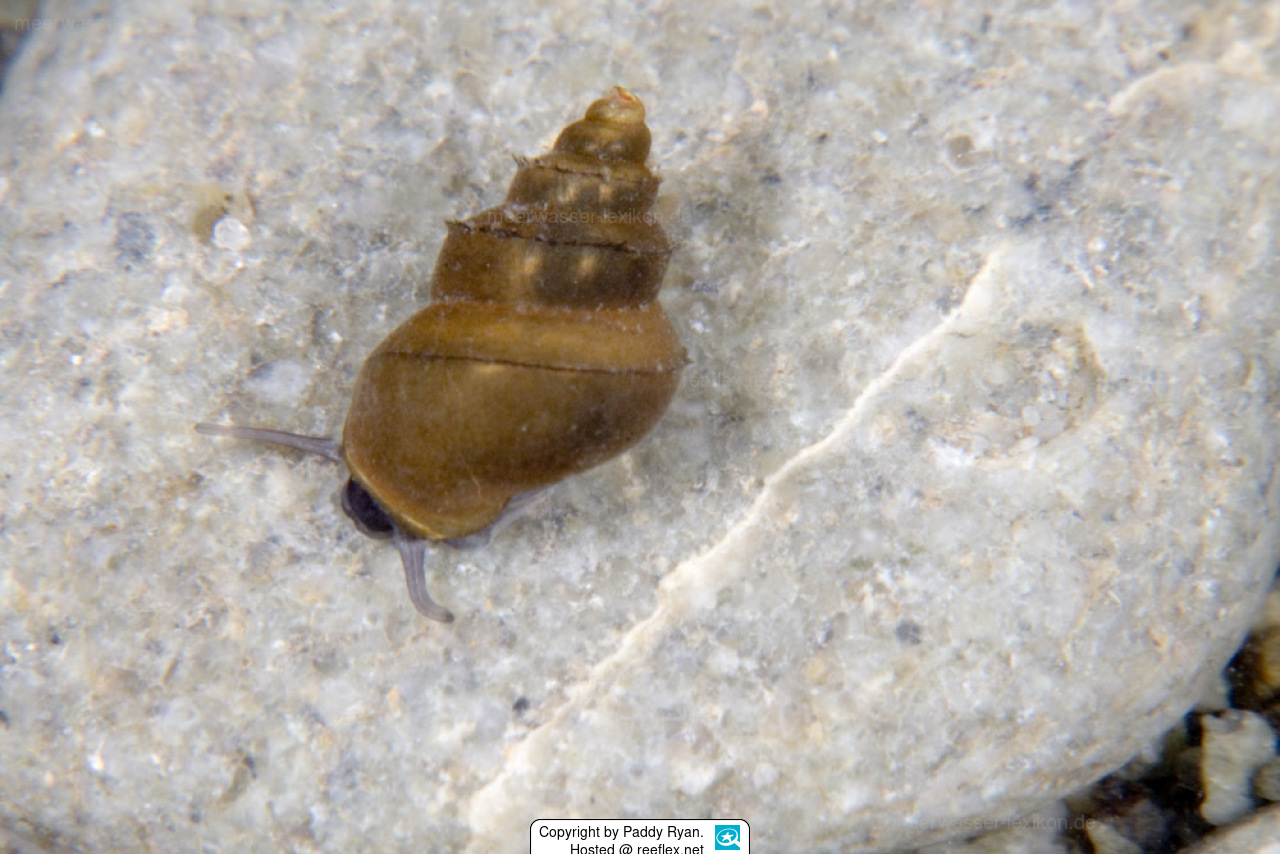Info
Potamopyrgus antipodarum (Gray, 1843)
Potamopyrgus antipodarum is native to New Zealand. Its an extremely tolerant species that is capable of inhabiting many aquatic condition.Lives in a wide range of habitats.
Shell colour is gray,light brown, brown to dark brown.
Synonyms:
Amnicola corolla
Hydrobia jenkinsi
Paludestrina jenkinsi
Potamopyrgus jenkinsi
Potamopyrgus jenkinsi aculeata
Rissoa vana
Rissoina fuscozona
Rissoina vana
Potamopyrgus antipodarum is native to New Zealand. Its an extremely tolerant species that is capable of inhabiting many aquatic condition.Lives in a wide range of habitats.
Shell colour is gray,light brown, brown to dark brown.
Synonyms:
Amnicola corolla
Hydrobia jenkinsi
Paludestrina jenkinsi
Potamopyrgus jenkinsi
Potamopyrgus jenkinsi aculeata
Rissoa vana
Rissoina fuscozona
Rissoina vana







 Dr. Paddy Ryan, USA
Dr. Paddy Ryan, USA


